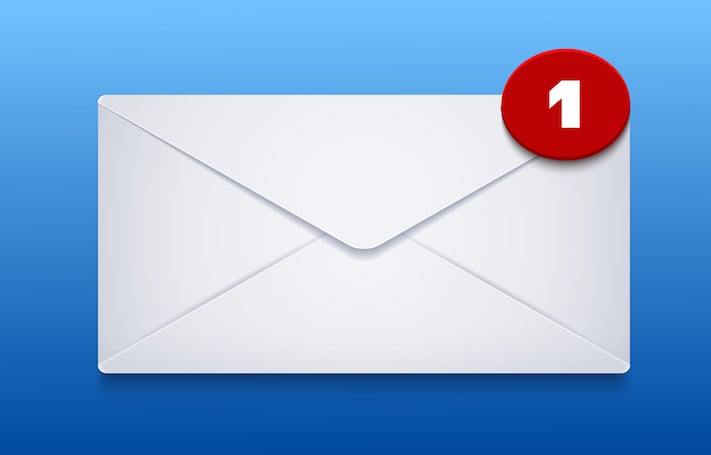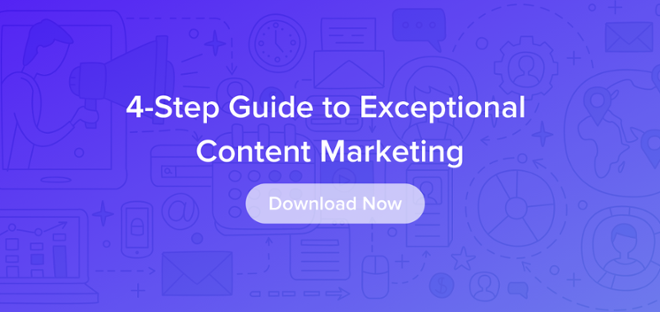
Email marketing has come a long way since the days of blasting out generic, misleading emails to a mass audience that ended up slowly dying in the spam folder.
Although more brands are deploying savvy email marketing campaigns that drive sales and engagement, HubSpot’s Science of Email 2014 suggests that consumers aren’t totally sold on emails.
When asked, “How often do you buy products or services from email messages you’ve received?” 35 percent of respondents answered, “Never,” compared to only 25 percent in 2011.
As HubSpot says in the report, this data “should not be taken to mean that email marketing has become less effective over the past three years, but rather that successful email marketing requires a more intelligent, strategic approach than it did in the past.”
To build meaningful connections with prospects through email, you have to give them a reason to click through and deliver on your promise. By combining your email and content marketing efforts, you can supply readers with dynamic content they want to read and continue the lead-nurturing process.
Aligning Your Email and Content Marketing Strategies
Email marketing is a powerful platform for extending your content’s reach that practically pays for itself. With an ROI of 4,300 percent, it’s arguably the most cost-effective strategy, especially when paired with a targeted content strategy.
To revive your email and content marketing efforts, you need to align your strategies to get the right content in the hands of the right readers. Here are three ways to strengthen your email marketing strategy:
1. Ask for permission.
No one likes unsolicited emails, and sending your emails to every address you get your hands on won’t earn your audience’s trust. Before deploying your email marketing campaign, you need a list of interested recipients to send your content to. There are a few ways to ask prospects to join your subscriber list, but always outline exactly what they’re signing up for.

We use this call to action on our blog, letting readers know what they can expect from signing up. And once they have, we provide them with fresh, high-quality content on a weekly basis.
2. Test your subject lines.
MailChimp found that the average email open rate across all industries is less than 30 percent. This means that you have to craft a compelling subject line that will entice readers to open your emails. After all, what’s the point of sending emails if the recipients don’t read the content you’ve shared?
To maximize your email open rate, systematically A/B test your subject lines. Make sure to narrow down your variables so you know which changes trigger which responses. Decide what you want to learn, and test only those things.
For example, we recently conducted a split test on the subject line of our Influence & Co. Weekly newsletter emails. We randomly split our list and cloned the email to test which subject line was opened more: “How Brands Can Redeem Themselves in 2015” or “How brands can redeem themselves in 2015 | Influence & Co. Weekly.” After analyzing the results a week later, we discovered that the subject line without the tag was opened 73 more times (approximately 2 percent more) than the other.
This process takes patience, but without a clickable subject line, leads won’t open your emails or click through to your content.
3. Personalize your emails with marketing automation tools.
For your content and email campaigns to successfully work together, you need to connect leads with information that speaks to them. People just learning about the advantages of content marketing won’t need in-depth case studies of our services; they will only drive them away.
To get relevant information in the hands of prospects at different stages of the sales funnel, we segment our leads with HubSpot Workflows. This way, leads get the information they need to naturally move through the funnel.
Marketing automation tools such as HubSpot allow you to easily integrate email with your overall content marketing strategy. Email has become the main medium that prospects use to engage with our brand, and these tools allow us to send personalized emails in a fraction of the time. When new contacts download our whitepaper, they automatically receive a thank-you email along with a link to download the gated content. When people subscribe to our blog, they receive a weekly digest of our most recent content and exclusive offers.
By sending valuable content to leads, we educate them through the sales funnel and spark engagement with our brand. In fact, this past year, we gained an additional 8,753 visits to our site as a direct result of our email marketing efforts.

In 2014, our gated content (lead-nurturing emails) had an average open rate of 55.17 percent. That’s approximately 36 percent higher than the marketing industry average, according to MailChimp. Our click-through rates were also well above industry averages, meaning we delivered fresh, engaging content that our subscribers were eager to read.
Don’t let the dreary email marketing statistics fool you. Email has huge potential for building relationships and driving conversions — if executed correctly. By creating email campaigns that complement your existing content products, you can deepen relationships with your audience and convert well-nurtured leads into happy, long-term customers.










